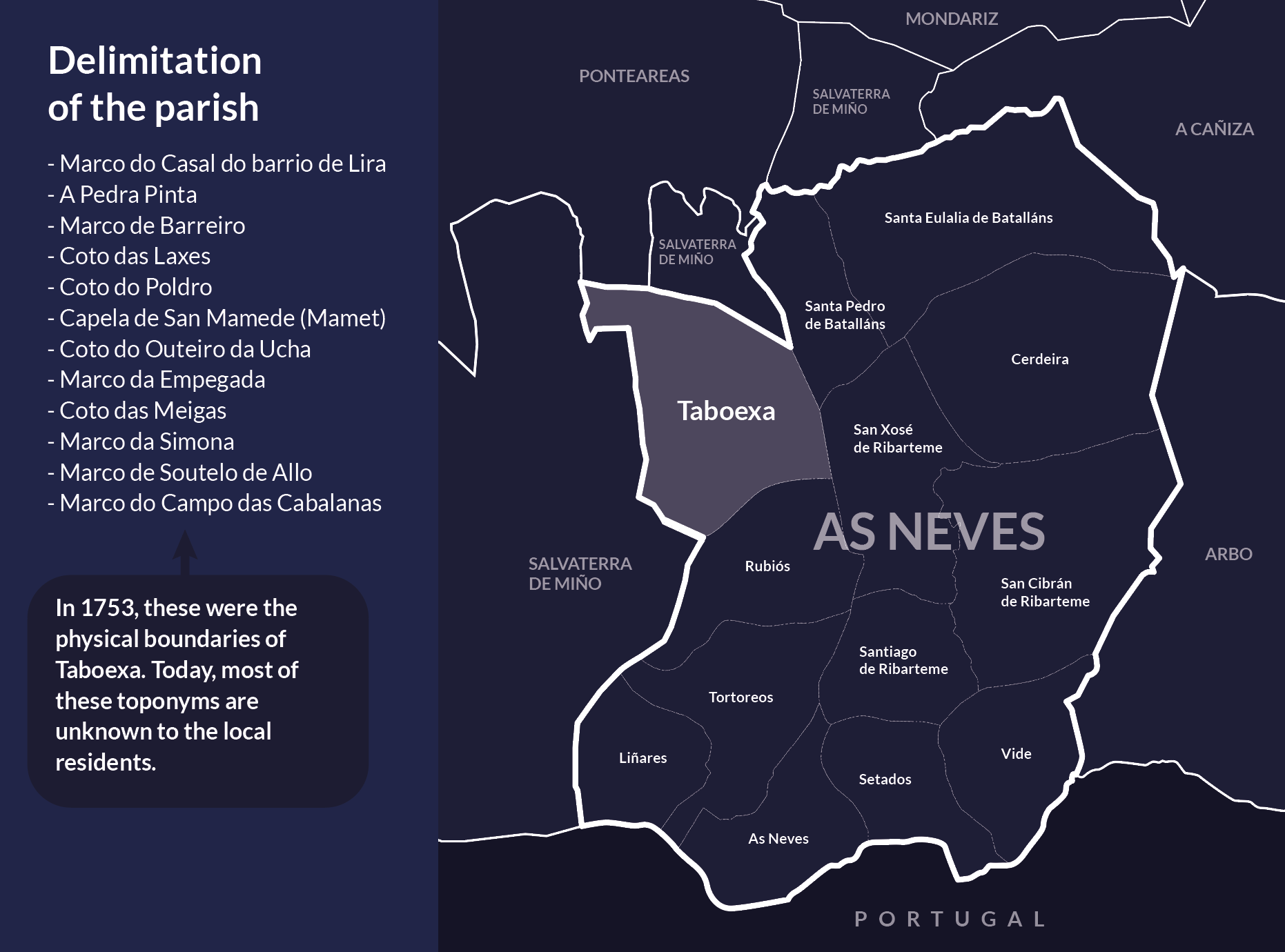
Gerardo Álvarez Limeses
Geography of the Kingdom
of Galicia
Gerardo Álvarez Limeses, 1936
‘Population centres: Gurbelas, with 27 inhabitants: Leiradiño, 18; Millaxendo, 48; A Moreira, 158; O Morgallón, 25; O Outeiro, 22; A Pedreira, 63; Perdeán, 207; Rego Novo, 105; O Reguengo, 24: A Trigal, 96; A Viña do Pazo, 172, and disseminated, 9; total, 974, for which there are two unitary schools; the girls' school has an excellent building.
Its main mountain is San Mamed, some 800 metres high, and it is bathed by the Rubial-Freiro, Adreira and Siós streams. There is a road under construction that crosses the Carrasqueira neighbourhood. In the past, a monthly fair used to be held here on the 10th, but this has now disappeared.
The church was built in 1544 and is ogival in shape, and there are also the chapels of San Bartolomé, San Sebastián, San Vicente, La Ascensión and San Mamed, the latter on the summit of the hill of the same name, the latter two being its main festivals, as well as that of Santo Cristo de la Salud.
In the village of Leiradiño there is a fortified settlement, and on the hill of Altamira the citania mentioned above (...) and some interesting cave inscriptions.
The parish has electric lighting, several flour mills and taverns, some looms that still produce coarse linen fabrics and tow, and abundant produce such as wood, corn, rye, potatoes and vegetables, as well as abundant cattle, horses, sheep, goats and pigs.

Pascual Madoz
Geographical-statistical-historical dictionary of Spain and its overseas possessions
Pascual Madoz, 1845
‘TABOEXA (SANTA MARÍA): felig. in the province of Pontevedra (6 1/2 leg.), judicial district of Ponteareas (1 1/2), diocese of Tui (3 1/2), municipality of Setados. SIT. on the SW slope of the mountain of San Mamed, with free ventilation and healthy CLIMATE. It has 216 HOUSES in the villages of Barreñas, A Carrasqueira, A Igrexa, Millaxendo, A Moreira, O Morgallón, Os Píos and A Viña. The parish church (St. Mary's) is served by a priest who is removable and appointed by the diocese; and is annexed to the church of Our Lady of the Conception in Carrasqueira (...) PROD.: corn, rye, potatoes, trees and pastures; cattle, sheep and goats are raised, and game of various species, POPULATION: 216 neighbours, 864 alm. (...)‘ (...)’.




